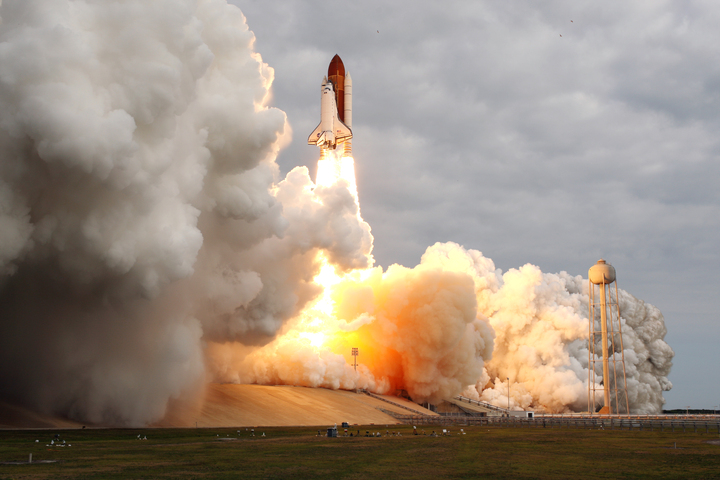
The Alpha Magnetic Spectrometer (AMS) experiment, designed to study dark matter and anti-matter from the International Space Station, launched successfully aboard the Endeavour shuttle from NASA’s Kennedy Space Center on 16th May, 2011.
AMS was built by an international collaboration of 600 physicists from 56 institutes including CERN and a few CMS institutes. The science that this space-based experiment has been designed to explore has many overlaps with the subterranean CMS experiment at the LHC. Indeed there are several scientists who work with both collaborations.
One of the goals of AMS is to discover the nature of dark matter – a goal that CMS aims to achieve by probing for dark matter candidates from Supersymmetry. AMS is also designed to probe for naturally-occurring strangelets, while CMS is likely to observe strange objects in collisions at the LHC, thanks to CASTOR. AMS will also answer conclusively whether there is or isn’t significant anti-matter in the universe.
The seemingly distant worlds of particle physics at the subatomic scale and astrophysics at its stellar scale have been converging for many decades now. The truly international effort of constructing AMS (16 participating nations), launching it and maintaining it onboard the ISS (which itself is sustained by the collaboration of the American, Russian, Japanese, Canadian and European space agencies) marks a key moment in this convergence.
The best wishes of the CMS collaboration go out to all members of and contributors to the AMS experiment.
Figure caption: Endeavour carries AMS as it blasts off from the Kennedy Space Center. Photo credit: NASA.
[ More details ]
- Log in to post comments

